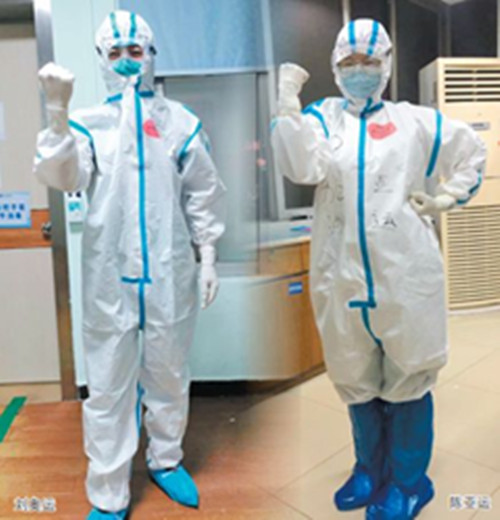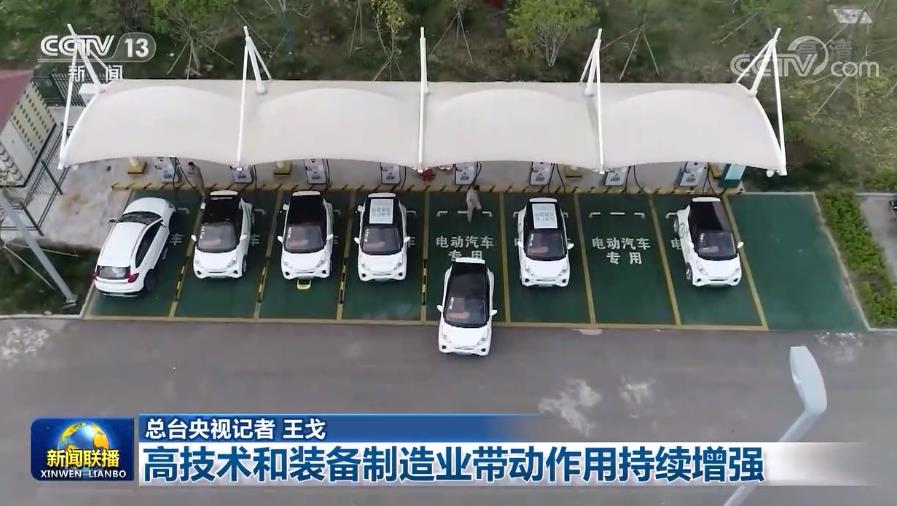This article is reproduced from, and other media reprints must be approved by Chaoneng.com.
Now it’s 9102, and the idea that installing and upgrading computers is the first choice for SSD hard drives has long been deeply rooted in people’s hearts. In addition, the price of NAND flash memory has been falling for more than a year, and the price of SSD hard drives with a capacity of 1TB has become the mainstream within 1,000 yuan. Moreover, you can buy higher-performance M.2 hard drives instead of SATA hard drives. If you are not afraid of death, you can also consider some brand-name SSD hard drives with a price of nearly 5 gross /GB, and buy them as warehouse disks. Looking back at HDD hard disks that have not been reduced in price for many years, it is not unreasonable that the mechanical hard disk market is dying.

However, HDD hard disk is gradually moving away from the desktop and notebook computer market, which can represent the perfection of SSD hard disk? Not really. Nowadays, SSD hard drives are "really fragrant" in the environment of great price reduction, but it still has a problem that makes people feel bad — — Drop speed. Players who have used SSD hard disks for a long time should have an understanding of the speed drop (some people actually don’t realize this problem). Today, we will talk about the speed drop of SSD hard disks in Super Class.
At present, there is no accurate definition of SSD hard disk speed drop. Here, we will interpret it as "performance degradation" according to the literal speed drop, and analyze various reasons and solutions that may lead to SSD speed drop at present.
SLC, MLC, TLC to QLC transition of ·SSD drop speed
Is the upgrade of flash memory type also the reason for the speed drop of SSD hard disk? If you think about it carefully, it’s true. In fact, we can say that it is the constant change of flash memory types that leads to the increasingly serious problem of SSD hard disk speed drop. If we still use SLC flash memory, the problem of speed drop is long gone, but forget about SLC flash memory hard disk. The best flash memory means the most expensive cost. Even if manufacturers still dare to use SLC flash memory as the main force, ordinary consumers can’t afford it.

From SLC, MLC to TLC to QLC, the capacity of cell unit is increasing, and the cost is decreasing accordingly. However, the inherent characteristics of NAND flash memory determine that the more potential, the more complicated the control, and the longer the time to write data, resulting in a significant decline in performance (mainly writing performance and good reading performance).
The hard disk performance of TLC and QLC flash memory we see now is not bad, and the writing speed of SATA interface can also reach 500MB/s, and the writing performance of M.2 interface can reach 1GB/s, 2GB/s or even higher depending on the number of PCIe 3.0 channels, but this performance is after magic, and it is the performance in an ideal situation.

The above picture shows the actual performance of the 660P hard disk of Intel QLC flash memory. With the increase of the written data, the original performance of QLC will be exposed after the cache space is used up, and the writing speed will drop to 100MB/s, which is not much faster than that of HDD hard disk.
Garbage collection GC and TRIM with ·SSD dropping speed
When it comes to the problem of SSD hard disk speed drop, old players may still remember the non-drop function promoted by Puckett in his own M-series high-performance SSD hard disk in the early years. This selling point attracted many SSD users at that time, considering that MLC flash memory was still the main force in the market at that time, SSD hard disk speed drop was mainly caused by the main control management mechanism at that time.

Specifically, it is the problem of GC garbage collection and TRIM instruction of SSD. If you have read our previous popular science articles, you will know that the special feature of NAND flash memory lies in the way of writing files, which needs to be deleted piece by piece. Because of various writing and deleting operations, messy data will be left on SSD, some of which are still useful and some of which are invalid. After the GC function is started, the useful data will be copied to another block, and the original storage area will be clear, and the empty disk level will be restored to prepare for writing new data.
In addition to GC garbage collection mechanism, Microsoft also introduced TRIM instruction in Windows 7 and later systems, which is an instruction based on SATA controller. Once there is file deletion or partition formatting, the operating system will send TRIM instruction to the SSD master controller to tell it that the data somewhere has been deleted, so SSD knows that those data can be moved and those cannot be moved, and then it can be emptied to restore performance.
GC and TRIM can also affect the speed drop of SSD hard disk, but now these functions have become the basic functions of SSD, and the support of operating system is not a problem, because these two problems lead to much less speed drop of SSD.
840 EVO deceleration gate of ·SSD deceleration.
From SLC to MLC to TLC and QLC, not only the performance of flash memory is gradually declining, but also its reliability is declining, which is reflected in the fact that the physical layer is due to the more charge bits stored in TLC and QLC flash memory, and the control is more complicated. As time goes by, the activity of electrons will also be lost. When TLC flash memory first came out, Samsung 840 Evo experienced the problem of performance degradation due to long-term non-use.

The 840 EVO speed-dropping event means that when it reads the old files stored for more than several weeks or months, the speed is seriously not as good as expected. According to the official index, the reading speed of 840 Evo exceeds 450MB/s, but when reading the old files, the speed is as low as 60MB/s, and the speed is obviously reduced.
For this problem, Samsung also made an investigation later, saying that "with the help of flash memory management software algorithm, SSD usually corrects the state of the Cell unit over time, and the read-retry operation of 840 Evo is too radical, which leads to the decline of the overall read performance. This situation will only happen when there is no data change in its internal Cell unit. If the data of this unit is subsequently migrated or overwritten, there will be no problem of performance degradation. "
Finally, Samsung released a new firmware to solve the problem of 840 Evo speed drop. On this issue, Samsung did not admit that this is a problem of TLC flash memory, but in the early stage of development, TLC flash memory had some problems from flash memory to main control management, and it was not unexpected that this problem appeared.
Main control overheating protection of ·SSD speed drop
The above-mentioned SSD speed drop is all about flash memory, but the SSD master control will actually affect the SSD speed drop problem, which is mainly caused by the overheating protection problem of SSD hard disks, and basically there is no such problem on SATA hard disks, mainly after a large number of high-performance M.2 hard disks are listed.

SSD master control is essentially a CPU based on ARM or self-developed architecture. In order to improve performance, SSD master control is often multi-core. Three-core or even four-core master control is not uncommon, and heating under high load is also a problem. For high-performance SSD hard disks with PCIe and M2 interfaces, it is normal for the temperature in the main control area to exceed 90°C or even go to Baidu due to the small space and concentrated heating. In order to avoid high-temperature damage, SSD hard disks will have a temperature control mechanism, and if the temperature is detected to be too high, the frequency will be reduced, thereby reducing the heating.
However, reducing the main control frequency will actually reduce SSD performance. In order to solve the problem of heat loss, the most common means is to improve the heat dissipation effect. For example, Samsung used a better package in the main control design of the 970 Pro hard disk, and the whole main control used a metal shell package to improve the thermal conductivity.

Of course, the more direct way is to install a heat sink, so you can see that all kinds of M.2 hard disks are becoming popular. Before Yingchi, we also introduced the armored M.2 hard disk, using a heat sink with amazing thickness. Although it looks ugly, the effect is overwhelming.
In addition to the reasons for the speed drop mentioned above, there are actually some other factors that will affect the normal performance of SSD, such as 4K misalignment, synchronous/asynchronous flash memory, AHCI/IDE mode, etc. However, these operations are not the main problem now. In the past, the main problem was that SSD was not popular, and many people did not understand the settings. Now Windows system itself has added many SSD optimization settings, and third-party tools have also supported SSD.
Cache structure of SSD hard disk: from DRAM Cache to SLC Cache
The above content about SSD speed drop involves all aspects, but for a single SSD hard disk, the problem of SSD speed drop is not so complicated. Let’s get down to business. Let’s take a look at the basic structure of modern SSD hard disks first:

No matter SATA or M.2 hard disk, their PCB layout is similar. The M.2 hard disk above is DRAM cache, main control and NAND flash memory from left to right, in which main control and NAND flash memory are essential, and DRAM cache may or may not be available. The main thing that is not available is low-end SSD hard disk. Reducing DRAM cache can reduce the cost, especially in the past two years, because of the large price increase of DRAM memory, low-end SSD is more popular without DRAM cache, and they will use HMB host memory cache to make up for it.
For high-performance SSD hard disk, DRAM cache is indispensable, because even DDR3 cache, its bandwidth can reach several GB/s or even more than ten GB/s, which is much higher than the performance of SSD flash memory, which is very helpful to improve performance. Now Samsung and other companies have begun to use DDR4-2133 as cache on high-end SSDs.
As for the DRAM cache capacity, 128MB, 256MB and 512MB are common. With the increasing size of SSD hard disk, 1GB cache is not uncommon. Generally speaking, 1TB flash memory with 1GB DRAM cache, the higher the better.
DRAM cache is the first cache structure of modern SSD hard disk. Reading data from hard disk is to see if there is any needed data in DRAM cache first. If there is, it will be used here first, so the speed will be very fast. If there is no search in NAND flash memory in the cache, the speed will be NAND flash memory, which is relatively much slower.
Generally speaking, DRAM cache is the icing on the cake for SSD hard disk, and there is also a speed drop from DRAM cache to NAND flash memory, but usually this speed adjustment is not felt by everyone. After all, the cache capacity is still too small and it is easy to exceed it.
SSD hard disk still depends on the performance of NAND flash memory in most cases, but we all know that the writing performance is declining from SLC to MLC to TLC and QLC flash memory, and the original TLC and QLC flash memory are very ugly. Without modification, the writing performance of QLC flash memory may not be 100MB/s, and HDD hard disks are faster than it.

However, in the TLC and QLC flash drives actually sold, the performance is very strong regardless of SATA or M.2 interface. In the product like Samsung 970 Evo, the nominal write performance of the 250GB version can reach 1500MB/s, but it is the performance after using the Write Acceleration technology, and the actual performance is about 300MB/s, which is four times worse.
SSD write acceleration technology is a general term, and the common scheme is SLC cache, which means literally — — Use SLC as cache to speed up, because SLC flash memory has the best performance.

In the era of MLC flash memory, SLC cache technology is not necessary. Samsung 970 Pro does not use this technology, while 970 EVO does, but SLC cache is not without cost, because SLC can only store 1-bit data, TLC is 3-bit data, and QLC is 4-bit data. Using SLC cache on TLC/QLC flash memory means sacrificing capacity for performance. This is a devil’s exchange. The ugly point is whether you choose X-flavored chocolate or not.
Using SLC cache can improve the writing speed of SSD and make it look NB, but it means losing some space, depending on the scheme chosen by the manufacturer. If the whole scheme is adopted, it means that only 1/3 or even 1/4 of the capacity is available.

Using SLC cache is like a roller coaster.
More importantly, even if SLC cache is used, once the written data exceeds the cache capacity, the SSD performance will have to show its original shape. At this time, the SSD hard disk will drop speed, because the original TLC/QLC performance will have to be used after the cache acceleration space is exceeded. It will be ugly at this time, and the writing speed of about 100MB/s is normal.
Of course, the additional benefit brought by SLC cache is not without it, that is, the loss is smaller when the power is unexpectedly cut off. After all, SLC stores 1-bit data.
In each SSD manufacturer, SLC Cache technology has different names, Samsung is called TurboWrite, SanDisk is called nCache, and Micron has Dynamic Write Acceleration dynamic cache acceleration technology. In fact, these technologies are also divided into different types, including full SLC Cahce and partial space for caching, among which full simulation has the best effect, but it is the biggest waste of space. So now SLC Cache technology is generally to set aside some space, and the specific choice of how much space is comprehensively considered by manufacturers, which can be less than 10% or 20%.

In addition, there are actually dynamic and static SLC Cache regardless of the whole or partial space simulation, and these two technologies actually have their own advantages and disadvantages. Micron’s DWA is the dynamic write cache acceleration technology, and its advantage is that users can maintain good acceleration performance after using different capacities.

In a word, the major manufacturers have their own choices in SLC cache, and the cache space, cache allocation and acceleration strategy may be different, and there is no difference in technical route. However, in any case, after the SLC cache space is exhausted, the performance of SSD will be exposed to the due level, that is, the original performance of TLC/QLC.
This is the point. If the SSD hard disk uses more space, the remaining blank capacity will be less, which is more unfavorable for cache acceleration, so the performance will be lower. This is also the root cause that many people feel slower and slower when using SSD hard disks. This is how the speed drop is often said.
For the problem of SSD speed drop, except for specific problems, if the speed drop is caused by the exhaustion of cache, there is really no good way, unless you are not afraid of the trouble of dumping data, always erase the SSD hard disk safely.
If you are very concerned about the speed drop, the only choice now is to buy MLC hard disk or large-capacity SSD, the capacity is not less than 1TB, the bigger the better.


































